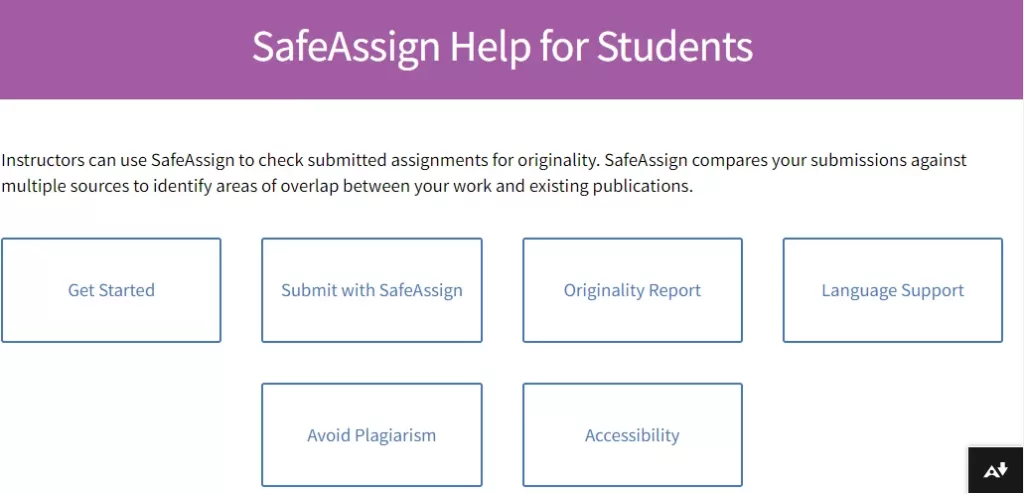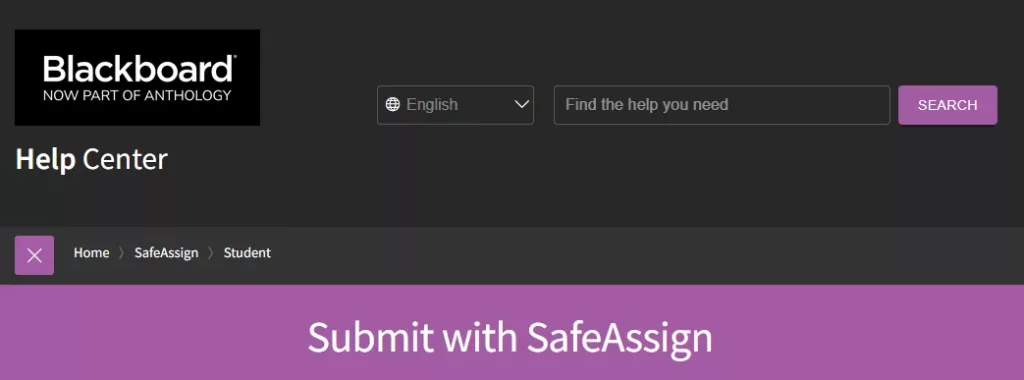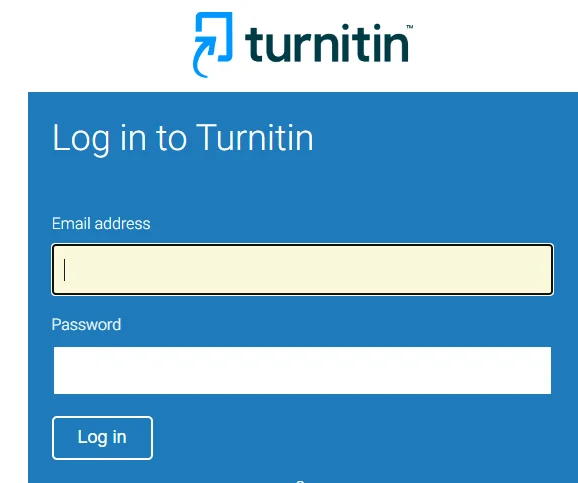SafeAssign is a plagiarism detection tool students, educators, and institutions use to ensure academic integrity. It compares submitted assignments with a massive database of scholarly works, online sources, and other student papers to identify potential matches or instances of plagiarism.
You can integrate SafeAssign into various learning management systems (LMS) such as Blackboard and Canvas, making it convenient for students to submit their work and receive feedback. This tool’s primary goal is to promote academic honesty and foster originality in academic writing.
How SafeAssign Works
By detecting suspected plagiarism in student papers, SafeAssign assists teachers and students in ensuring academic integrity. SafeAssign evaluates student papers against a vast database of literary and online sources, calculating their originality percentage and identifying any content that matches.

It is essential to use SafeAssign when creating academic papers. Plagiarism is a serious offense with substantial repercussions, such as poor marks, suspension from educational programs, or expulsion.
By comparing student papers to a vast database of sources, such as books, journals, and online information, SafeAssign aids in the prevention of plagiarism. This offers a quick and accurate technique to find any possible plagiarism in student work.
SafeAssign evaluates student papers against a vast database of scholarly and online sources.
When a student turns in a paper, the SafeAssign tool scans it for any content that matches. The technology then gives the professor an originality report, identifying any instances of possible plagiarism. The report highlights any potential problems with the student’s work and indicates the proportion of the paper that is deemed original.
Typically, SafeAssign is an essential tool for fostering academic integrity because it can identify and stop plagiarism. It offers a quick and easy approach for teachers and students to verify that written assignments are unique and plagiarism-free.
How to Access SafeAssign
Use the steps below to access SafeAssign using the learning management system (LMS) at your institution:
- Use your login and password to access the LMS at your university.
- Go to the course where the assignment is to be submitted.
- The “Assignments” or “Assessments” tab should be selected.
- Choose the assignment for which SafeAssign is required.
- To access the assignment, click the link.
- To submit the assignment using SafeAssign, abide by your instructor’s instructions.
- You’ll get a confirmation email after you turn in the assignment.
- Contact your teacher or your institution’s LMS technical support staff if you experience difficulties accessing SafeAssign.
How to Use SafeAssign
SafeAssign checks submitted papers against a database of scholarly sources and online information. It’s simple to submit a document to SafeAssign, which can assist you in avoiding accidental plagiarism.

The steps to submit a paper to SafeAssign are as follows:
Enter your Blackboard login information and find the course where you need to turn in your work.
- To submit the paper, click the link for the assignment you want to use.
- To reach the submission page, click the SafeAssign link.
- To select the file you wish to send, click the Browse option.
- After choosing the file, upload it to SafeAssign by clicking the Upload option.
- You will see a confirmation message stating that your submission was successful once the file has been uploaded.
- Ensure your paper is in an appropriate format, such as.doc, .docx, or.pdf, to ensure a successful submission.
- Verify that the file size is within the permitted range.
- Make sure the file you chose to submit is the right one by checking twice.
- Verify that you have adhered to all requirements by going over the assignment guidelines.
- To avoid late fees, submit the paper before the due date.
SafeAssign Best Practices
Instructors can use SafeAssign to verify the originality of written assignments provided by students. However, students can also use SafeAssign as a helpful tool to develop their writing abilities. Let’s go through the best ways to use SafeAssign in academic writing and how to use it to improve your writing abilities.
First, it’s critical to understand SafeAssign’s intentions. Its goal is to encourage academic integrity and ensure that students correctly cite their sources, not to punish students for plagiarizing. It is crucial to explain to children the benefits of SafeAssign and how it can aid in the formation of excellent writing habits.
Second, it is advised that teachers give students explicit instructions on how to use SafeAssign. This covers details on how to turn in assignments, read SafeAssign reports, and handle any potential problems. Teachers can also show pupils basic writing strategies, including accurate citations and paraphrasing.
Again, you can use SafeAssign as a teaching tool. Before the final submission deadline, instructors might advise students to turn in drafts of their assignments to SafeAssign.
Students can do this to get comments on their writing and find out where they need to improve. Before turning in their final assignments, students can utilize SafeAssign to examine their work for unintentional plagiarism.
Finally, students can examine the SafeAssign reports to see areas where they need to improve their writing skills. For instance, the student can check their work to see whether they utilized too much direct quotation or need to modify sentences if the report emphasizes a significant amount of matching material.
SafeAssign reports highlight instances where students’ paraphrasing abilities need to be strengthened.
Alternative Plagiarism Detection Tools
In academic settings, plagiarism detection systems ensure originality, credibility, and academic integrity. Although SafeAssign is a popular tool for finding plagiarism at colleges, students can use many more options to verify their work for plagiarism.
1. Turnitin

One of the most popular tools for detecting plagiarism in academic work is Turnitin.
The student’s work is compared against a vast database of scholarly articles, internet resources, and other student submissions.
Using Turnitin’s similarity report, which emphasizes the copied text, instructors can grade student work.
2. Grammarly
Grammarly can be a supplementary tool to check for plagiarism, even if it is not a specific plagiarism detection tool. Grammarly checks for grammatical faults and other writing flaws.
If it discovers comparable content in its extensive database, it can also indicate possible plagiarism.
3. Copyscape
Copyscape is a tool that looks for plagiarism on the internet. It looks for the student’s work online and produces a report with any material that closely resembles or matches the submitted work.
4. Plagiarism Checker X
Downloadable software called Plagiarism Checker X compares the provided document to countless web sources, academic databases, and publications. It can produce a report that flags any copied material and compares the original and copied text side by side.
5. Quetext
Quetext is an online application that looks for possible plagiarism by comparing submitted work to its collection of scholarly papers and online sources. Quetext creates a report with a similarity score that flags and highlights any possibly copied information.
Students can access a wide range of other plagiarism-detection technologies besides SafeAssign. Each tool has unique capabilities, restrictions, and cost structures. But they’re all focused on preventing plagiarism and upholding academic integrity.

It is advised that students speak with their professors about which plagiarism-detection software is best for their assignments.
Conclusion
SafeAssign encourages students to produce unique work and avoid plagiarism, making it a helpful tool for advancing academic integrity.
Additionally, it allows teachers to spot suspected academic wrongdoing and take appropriate action. Students must uphold academic integrity to ensure the validity and originality of their work.
Academic punishments and reputational harm are just two significant outcomes of plagiarism. Because of this, it’s crucial to comprehend the fundamentals of academic honesty and use resources like SafeAssign to ensure your work complies with the necessary criteria.
Overall, adopting SafeAssign is crucial for academic writing because it encourages intellectual honesty and aids learners in avoiding plagiarism. To raise the caliber of their work and uphold the highest academic brilliance standards, students should use this instrument.
